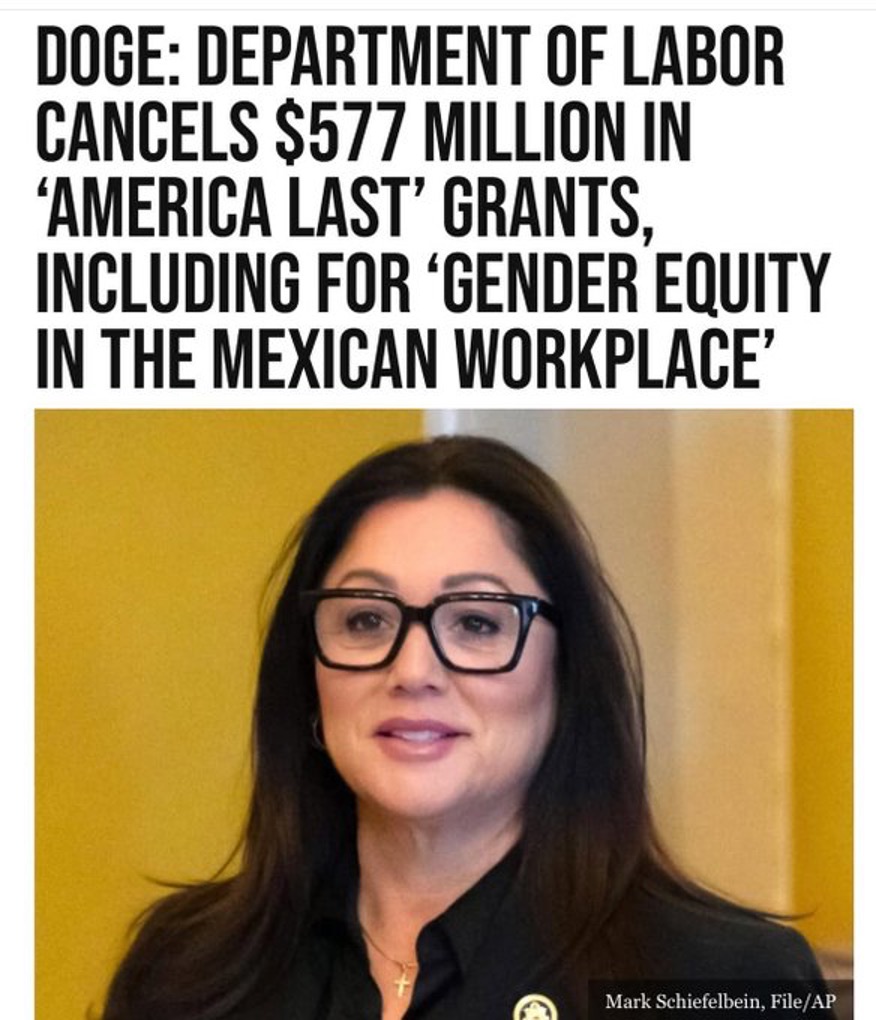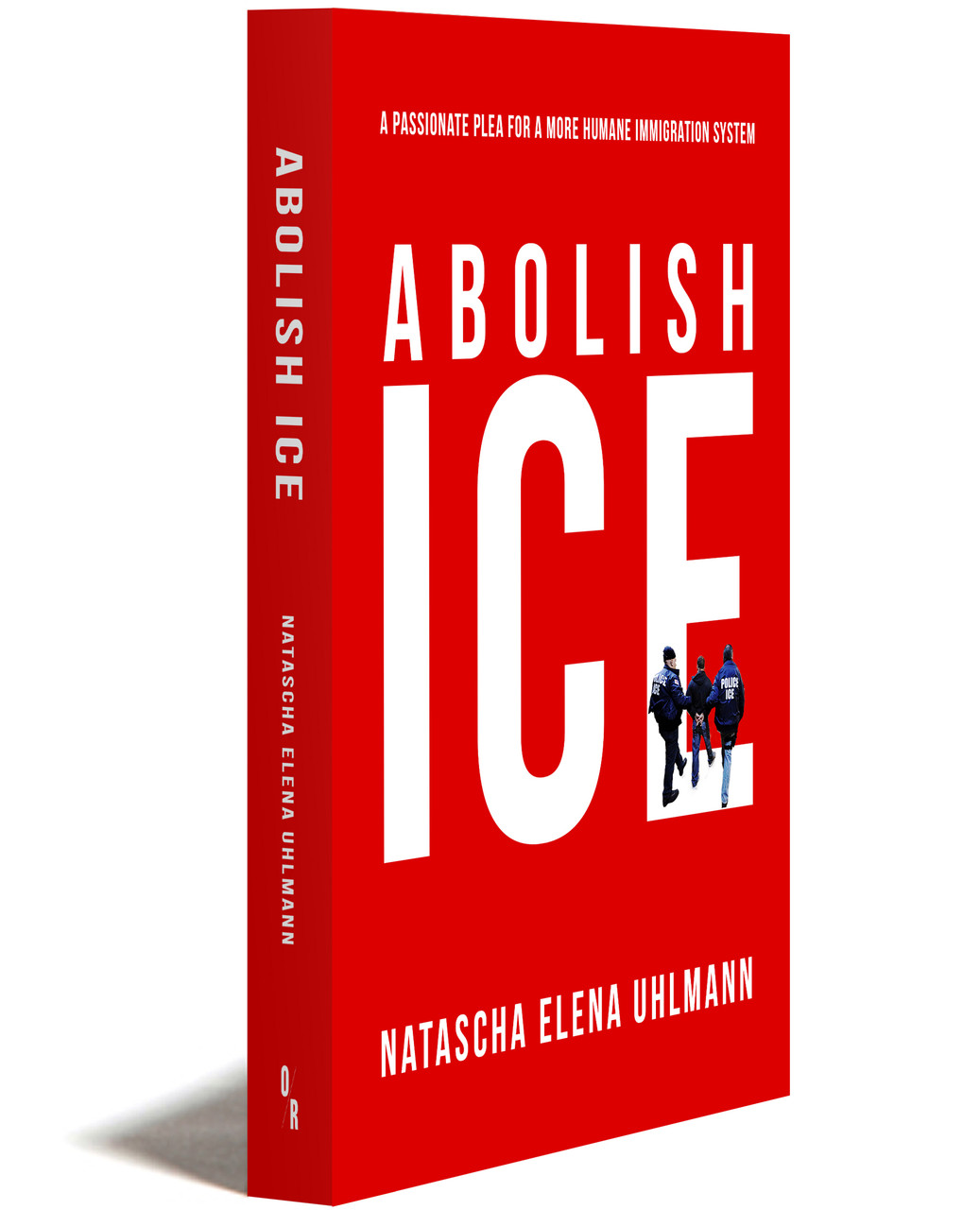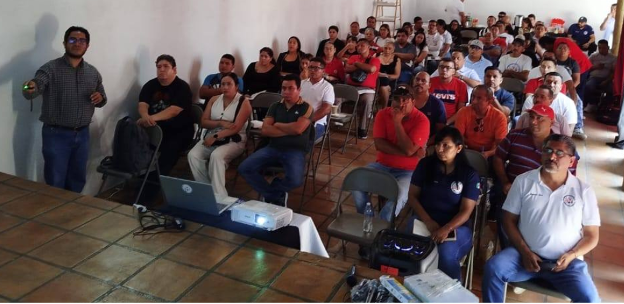|
|
The weekly newsletter of the Mexico Solidarity Project |
|
Every issue archived online at mexicosolidarityproject.org/archives/ |
|
August 13, 2025 |
|
|
|
A Rapid Response to Workers under Attack |
|
Meizhu Lui, for the editorial team |
|
|
A man works in a shoe maquiladora or factory, in Leon, Mexico, 2023. Photo: Mario Armas, AP
|
|
The people elected Andrés Manuel López Obrador (AMLO) president of Mexico in 2018, and for the first time, Mexican workers had a government focused on improving their welfare.
In 2020, US citizens elected Joe Biden, the most pro-labor president since Franklin D. Roosevelt pulled workers out of the Great Depression in the 1930s and 40s. Biden’s appointees to the Department of Labor and the National Labor Relations Board were exceptionally aggressive in defending workers’ rights. One appointee in particular was Thea Lee, the head of the International Labor Affairs Bureau. Lee oversaw the labor provisions in the USMCA — the US-Mexico-Canada free trade agreement — which took effect in 2020.
The USMCA has the strongest protections in the world for workers’ right to organize. The Rapid Response Mechanism enabled Mexican workers to file complaints directly to the US Trade Representative and the US Department of Labor, who were required to decide if their complaint was justified within just 30 days. During Thea’s term, the Rapid Response Mechanism was invoked 31 times, often resulting in victories for new democratic unions; her office won the trust and the praise of the Mexican workers they defended.
In 2024, the landscape for workers changed drastically. Following AMLO, Mexico elected Claudia Sheinbaum, a president similarly committed to lifting the living standards of Mexican workers. But in the US, Trump is probably the president most hostile to labor in US history, and his new Department of Labor appointees have wasted no time in reversing Biden’s policies, causing irreparable harm to both US and Mexico workers.
In these turbulent times, our two governments are out of sync. Which means that it’s more important than ever that workers don’t fall for Trump’s attempts to pit Mexican and US workers against each other, that we band together to protect our common interests. |
|
|
US-Based Protection for Workers Abroad |
|
Thea Lee served as Deputy Undersecretary for International Affairs in the US Department of Labor from 2021 to 2025 and headed their Bureau of International Labor Affairs (ILAB). She had been president of the Economic Policy Institute, a pro-worker think tank, and worked at the AFL-CIO for 20 years as Deputy Chief of Staff, Policy Director, and Chief International Economist. She has often testified in Congress and appeared on the media, always promoting international workers' rights. |
|
|
How did you go from policy advocacy to policy implementation?
I’m an international trade economist and a strong believer that workers can and should share the benefits of global trade. At the AFL-CIO, for many years I was responsible for advocating to Congress for improvements to the labor accords contained in trade agreements. |
|
Katherine Tai was a good friend; we were part of a group of women who encouraged each other. When she decided to apply to become the US Trade Representative, I thought it would be interesting to throw my hat in the ring for this Department of Labor position. We both were hired, two Chinese-American women. |
|
|
US-EU Trade and Technology Council meeting, 2022: Photo: Ting Shen/Bloomberg via Getty Images |
|
What international labor agreements were in your portfolio?
ILAB had a staff of 165 in three divisions. The Office of Trade and Labor Affairs participated in the oversight of 14 free trade agreements and unilateral preference programs. Together, those covered trade with 131 countries. All had enforceable labor provisions.
The broadest U.S. preferential trade program, the Generalized System of Preferences, gives designated developing countries preferred access to U.S. markets for certain products. We require those countries to take steps to comply with the International Labor Organization core labor rights. The weakness of those requirements was evident when the Rana Plaza building in Bangladesh collapsed in 2013, killing 1100 garment workers — one day after the building passed inspection!
But it wasn’t until the North American Free Trade Agreement (NAFTA) was negotiated in 1993 that there were formal labor provisions written into bilateral or regional trade agreements — very weak ones, but a step forward nonetheless. For every trade agreement, the AFL-CIO argued for stronger labor accords — that was my job. It often felt like a losing battle, but in retrospect it’s clear that we made steady incremental progress over the last two decades.
ILAB had a particular focus on Mexico. Why? |
|
|
NAFTA becomes USMCA (NAFTA 2.0) |
|
In 2019 NAFTA was renegotiated to become the United States-Mexico-Canada Agreement, the USMCA. For the first time, we were able to ensure that the labor chapter protected the right of Mexican workers to organize independent unions and to negotiate their own contracts. President López Obrador was all in. On the U.S. side, President Biden also supported vigorous enforcement of the labor provisions. |
|
But to make the change, the entire Mexican labor system needed to be transformed; before 2019, unions that protected employers and were dominated by the ruling PRI party were the main type of labor organization. To implement the USMCA’s labor chapter, which took force in 2020, the US Congress allocated $210 million over five years to help with this massive project.
$180 million was for technical assistance. The new agreement called for transparency in collective bargaining agreements. One Herculean task was to turn all existing contracts — there were about 20,000 — into PDFs that workers could access. That wasn’t simple, since many included confidential information that needed to be redacted. ILAB provided technical assistance to facilitate that process. |
|
|
Members of the independent union at the Saint Gobain factory in Mexico took part in a press conference about the organizing opportunities that labor law reforms have opened up. Photo: The Independent Union of Free and Democratic Workers of Saint Gobain Mexico, courtesy of Natascha Elena Uhlmann, Labor Notes, 2025 |
|
Other projects included helping unions, civil society, and businesses understand the new rights of workers through public media and educational campaigns. We hired 5 labor attachés for Mexico — only a handful of other countries got even one attaché — who worked on the ground with Mexican workers. |
|
They could gather information about possible violations, work directly with affected workers, monitor remediation agreements, and more.
There’s a perception on the part of Mexican workers that the US labor department was more helpful in upholding their right to organize than their own Mexican labor department, the STPS. Do you agree?
We found Mexican Labor Secretary Luisa María Alcalde — and her successor Marath Bolaños López — easy to work with. But as Secretary of Labor and Social Welfare, both had other priorities and responsibilities; Secretary Alcalde had a particular interest in programs for youth.
An innovation to the USMCA’s labor chapter was a Rapid Response Mechanism. Mexican workers who felt their right to organize was violated could call the USTR and ILAB directly, and the US had 30 days to accept or reject their complaint and then work with the Mexican STPS to remediate the situation. What’s your assessment of the RRM?
The labor chapter of the USMCA is the best labor chapter in the world, due to the Rapid Response Mechanism. I like to describe it as “speedy, surgical, and substantive.” This tool allowed us to target a specific company and to exercise the option to sanction it directly. Workers and unions in other countries would love to have an RRM process too. |
|
The first successful case using the RRM was at GM Silao, which got a lot of press coverage — which we wanted. After 60 years of corrupt charro unionism, we knew it would be hard to convince Mexican workers that unions are a solution to their workplace problems.
I see several weaknesses in the labor chapter. First, the agricultural sector is not covered, and farm laborers are some of the most exploited. Second, a way to prevent blacklisting needs to be found. |
|
|
Silao photo courtesy of GM |
|
|
Brookings Institution: Jennifer Gordon, 2023 |
|
Most of all, the labor rights must be symmetrical to all three countries in the USMCA. Now, workers in Mexico can use the RRM, but their counterparts working in the US or Canada have no way to use this potentially powerful tool to address labor violations.
Given that Trump is no friend of labor, what is the future of ILAB? |
|
The new Secretary of Labor appointed by Trump, Lori Chavez-DeRemer, abruptly canceled the technical assistance projects we had with Mexico. This is year 4 of a 5-year agreement, so all the previous dollars are wasted.
She tweeted, “We're working with @DOGE to root out waste, fraud, & abuse. @USDOL just saved taxpayers $30M by eliminating ‘America Last’ programs in foreign countries like Indonesia, Colombia, Guatemala, Chile, & Brazil. Under @POTUS, the American worker ALWAYS comes First. #AmericaFirst.” |
|
|
Trump's new Secretary of Labor, Lori Chavez-DeRemer |
|
At the Department of Labor she has singled out ILAB, the Office of Federal Contract Compliance Programs, and the Women’s Bureau for initial staff cuts. Around half of the ILAB staff has resigned or retired, under pressure from DOL leadership.
So how do you look back on your years at ILAB?
After sitting in the advocacy seat for decades, I got to sit on the other side of the table — I loved my stint in government! The US should use its wealth and power for the good of workers around the world. They are the ones providing for us; we have a responsibility for them. It felt good to be able to say to a foreign government, “You can’t put union organizers in jail if you want access to the US market.”
For those of you who dedicate your lives to expanding human and labor rights, I encourage you to think about a government position! |
|
|
|
|
SINTTIA Loses Election at Mexico GM Plant |
|
|
Natascha Elena Uhlmann is a staff writer/organizer for the online journal Labor Notes and is the author of Abolish ICE.
This article is excerpted from Labor Notes and has been edited for length and clarity. |
|
|
|
SINTTIA members gathered for a discussion on the automotive sector. Photo: SINTTIA |
|
The independent National Auto Workers Union (SINTTIA) was the first democratic union in Mexico to use provisions in the USMCA to oust a corrupt company union and win representation of the workers at General Motors in Silao. But it lost its bid to represent General Motors’ San Luis Potosí SUV plant. Workers voted for the new Carlos Leone union, with ties to the old employer-friendly Confederation of Mexican Workers (CTM). SINTTIA received 1,115 votes to the Carlos Leone union’s 1,888. Only half of the 6,500 workers voted. WITH HELP FROM GM As at GM Silao, workers refused to ratify the old CTM contract. GM then installed a “labor council,” largely made up of CTM supporters. When SINTTIA's organizing efforts became public in April and they called for a new representation election, the labor council resigned and began collecting signatures for the Carlos Leone union so it could also be on the ballot. They had only 10 days before the election to do so, but GM gave Carlos Leone sensitive worker information and allowed them to collect worker signatures on company time. enabling them to meet the 30% threshold for a ballot spot, a goal SINTTIA had been working toward for three years. The Federal Center for Conciliation and Labor Registry (CFCRL) provided SINTTIA with a GM-supplied worker list for the bargaining unit. SINTTIA advisor Willebaldo Gómez Zuppa said at least 1,000 names were supervisory employees ineligible for the bargaining unit. On election day, 500 supervisors were still on the list. The election itself was marked by irregularities. Voting hours, 5 am to 7 pm, disproportionately affected night-shift workers who work 6 pm to 6 am, many of whom had to quickly catch buses for long rides home. By the time the CFCRL stepped in and required GM to shut down the facility for voting from 2 pm to 3 pm and 6 pm to 7 pm, many workers had already finished their shifts for the week. The company used videos and social media to smear SINTTIA, falsely claiming it was a front for the US United Auto Workers and it would help move auto jobs to the US. SINTTIA noted its democratic processes, local leadership and successful negotiations. However, the climate of uncertainty across the auto industry due to Trump’s tariff threats was at the front of workers’ minds and resulted in confusion and low turnout. The union is drawing lessons from the setback. Gómez Zuppa stated that the 2019 labor reforms have reached their limits, and the union can no longer rely on institutions, only on worker organizing. “We trusted that the company was going to act justly, without interference. I think that was a grave mistake.” |
|
|
|
Recent news reports and commentaries, from progressive and mainstream media, |
|
Maria Abi-Habib, Mexico’s President Says U.S. Forces Are Unwelcome in Her Country New York Times. The Mexican government thought it had turned a corner in cooperating with the Trump administration on combating the cartels, having launched an aggressive crackdown of its own.
Rubén Martín, Nueva amenaza de Trump Sin Embargo. Intervenir México sería una catástrofe que regresaría las relaciones entre ambos países cien años atrás
Luis F. Munguía, How Mexico Doubled the Minimum Wage Phenomenal World. With the radical shift in Mexico’s wage policy, these recent increases in the minimum wage—while translating into an average income growth of 25 percent in real terms and a significant decrease in poverty and inequality—have only begun to chip away at corporate power.
Canadá intenta salvar su relación con México tras desacuerdo con Trump La Jornada. El primer ministro Mark Carney está luchando por salvar la relación de su país con México, después de que se estropeó a fines del año pasado cuando funcionarios canadienses sugirieron que sería mejor que negociaran un acuerdo comercial solo con el gobierno de Donald Trump.
Caroline Tracey, The Mexicali Experimental Project: A Contemplative, Human-Scale Approach to Housing on the Border The Border Chronicle. In the 1970s, the Mexican state worked with an avant-garde architect to build unique homes for workers in Mexicali. Could this forgotten experiment hold answers for Mexico’s housing crisis today?
Elia Castillo Jiménez, Pablo Gómez, un histórico de la izquierda para empujar la reforma electoral y convencer al PT y al Verde El País. Un puñado de pesos pesados del oficialismo, todos cercanos a la presidenta, integran la comisión presidencial que se encargará de impulsar la propuesta de reforma electoral que se ha fijado la mandataria aprobar en su Administración.
Mexican legislators promote progressive integration of America Prensa Latina. The 2nd Pan-American Congress closed its doors in Mexico after three days of debates focused, among other issues, on the integration of progressive legislators of the continent.
Viri Ríos, ¿Por qué se redujo la desigualdad con Obrador? Milenio. Mientras que en 2018 los hogares del 1% más rico del país concentraban el 49% del ingreso, ahora solo tienen el 44%. Una reducción de 5 puntos porcentuales que ahora se distribuye entre hogares de ingresos medios y bajos.
Maya Averbuch, Mexico’s Sheinbaum Finds Unlikely Ally in Young Heir to Corn-Flour Fortune Bloomberg. Altagracia Gómez Sierra , from a family with a fortune built on the privatizations and Fobaproa bailout of the neoliberal period, reaches out to business for President Claudia Sheinbaum.
Georgina Saldierna y Enrique Méndez, Sin PT y Verde no habrá enmienda, admite Morena La Jornada. Un primer problema es convencer a todos en Morena, y luego a los partidos del Trabajo y el Verde Ecologista de México. Sin ellos, no hay reforma constitucional, subrayó Fernández Noroña. |
|
|
|
|
The Mexico Solidarity Project brings together activists from various socialist and left organizations and individuals committed to worker and global justice. We see the 2018 election of Andrés Manuel López Obrador as president of Mexico as a watershed moment. AMLO and his progressive Morena party aim to end generations of corruption, impoverishment, and subservience to US interests. Our Project supports not just Morena, but all Mexicans struggling for basic rights, and opposes US efforts to undermine organizing and Mexico’s national sovereignty.
Editorial committee: Meizhu Lui, Bruce Hobson, Agatha Hinman, Victoria Hamlin, Courtney Childs, Pedro Gellert. To give feedback or get involved yourself, please email us! |
|
Subscribe! Get the Mexico Solidarity Bulletin in your email box every week. |
|
Web page and application support for the Mexico Solidarity Project from NOVA Web Development, a democratically run, worker-owned and operated cooperative focused on developing free software tools for progressive organizations. |

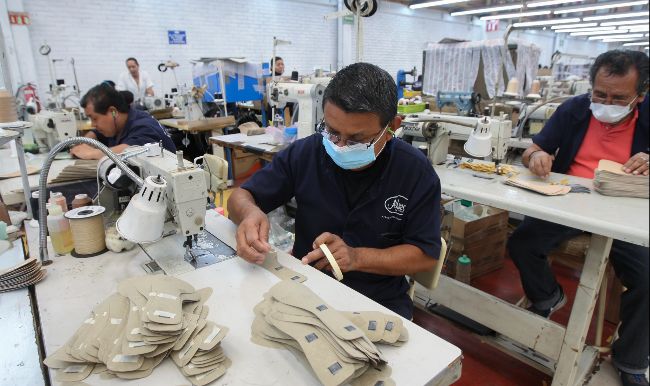


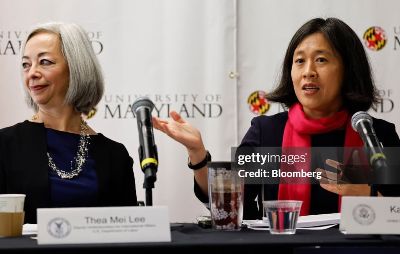

+goblain.png)


